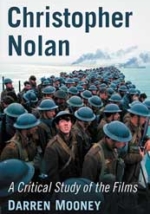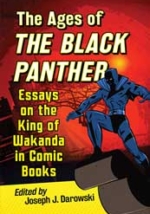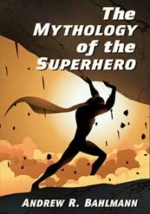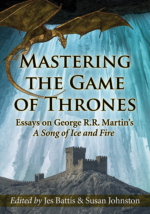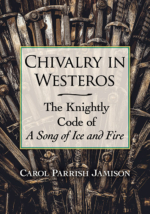We get it: someone in your household wants to bring in a tree while another hasn’t put away the Halloween decorations yet. We suggest using this liminal time to get started with your holiday shopping (and reading). Many of our readers look forward to our traditional post–Thanksgiving holiday sale to fill their shelves, nightstands and gift bags. This year, instead of waiting around for Black Friday, we’re opening up early access to you, our loyal readers and followers, as a way of saying “thank you!” for celebrating with us all year round. From now through Cyber Monday, November 28, get a Santa–sized 40% off ALL titles with coupon code HOLIDAY22! Don’t delay, because when early access ends, the discount will drop to the standard 25%. Happy reading!
Category: Transportation
Fall 2021 New Books Catalog Available Now
 Our Fall 2021 new books catalog is now available—click to see what our authors have in store for the coming months!
Our Fall 2021 new books catalog is now available—click to see what our authors have in store for the coming months!
Women’s Studies Sale and New Catalog
 Women made 2020 a banner year for diversity and inclusivity. In sports, representation on and off the field erupted with the leadership of Kim Ng, Sarah Fuller and Katie Sowers. Scientists Emmanuelle Charpentier and Jennifer A. Doudna jointly earned the Nobel Prize in Chemistry. And in politics, women like Cori Bush, Sarah McBride, Yvette Herrell and others were elected to ever-diversifying legislatures, while Kamala Harris ascended to the highest elected position a woman has yet to hold. To honor Women’s History Month and to nurture the path forward, we’re offering 20% off our catalog through March 31st with coupon code WOMEN20.
Women made 2020 a banner year for diversity and inclusivity. In sports, representation on and off the field erupted with the leadership of Kim Ng, Sarah Fuller and Katie Sowers. Scientists Emmanuelle Charpentier and Jennifer A. Doudna jointly earned the Nobel Prize in Chemistry. And in politics, women like Cori Bush, Sarah McBride, Yvette Herrell and others were elected to ever-diversifying legislatures, while Kamala Harris ascended to the highest elected position a woman has yet to hold. To honor Women’s History Month and to nurture the path forward, we’re offering 20% off our catalog through March 31st with coupon code WOMEN20.
Fall 2020 New Titles Catalog Available Now
 Our fall New Titles catalog is now available, featuring 184 forthcoming books from our authors. Browse now!
Our fall New Titles catalog is now available, featuring 184 forthcoming books from our authors. Browse now!
June Transportation Sale
 It’s June, gas prices are cheap, the highways are free of traffic, and holiday destinations are uncrowded. Let’s hit the road (in spirit, if not in deed)! Our automotive history line, including histories of marques famous and obscure, auto racing, biographies, reference works like J. Kelly Flory’s massive American Cars volumes, and much more, is complimented by many excellent works on locomotive, aviation, and maritime history; bicycles; and military transportation. This month, we’re offering ALL transportation titles at 40% off the list price with coupon code TRANSPORTATION40! Use this coupon code on our website through Sunday, June 28. Safe travels from your friends at McFarland!
It’s June, gas prices are cheap, the highways are free of traffic, and holiday destinations are uncrowded. Let’s hit the road (in spirit, if not in deed)! Our automotive history line, including histories of marques famous and obscure, auto racing, biographies, reference works like J. Kelly Flory’s massive American Cars volumes, and much more, is complimented by many excellent works on locomotive, aviation, and maritime history; bicycles; and military transportation. This month, we’re offering ALL transportation titles at 40% off the list price with coupon code TRANSPORTATION40! Use this coupon code on our website through Sunday, June 28. Safe travels from your friends at McFarland!
New to Kindle, March 2020
The following titles are now available on Kindle:
|
A Century in Uniform: Military Women in American Films
|
|
African American Entertainers in Australia and New Zealand: A History, 1788–1941
|
|
Apocalypse TV: Essays on Society and Self at the End of the World
|
|
Apocalyptic Ecology in the Graphic Novel: Life and the Environment After Societal Collapse
|
|
Autogenic Training: A Mind-Body Approach to the Treatment of Chronic Pain Syndrome and Stress-Related Disorders, 3d ed.
|
|
Baseball in Europe: A Country by Country History, 2d ed.
|
|
Chasing the Bounty: The Voyages of the Pandora and Matavy
|
|
Colonels in Blue—Missouri and the Western States and Territories: A Civil War Biographical Dictionary
|
|
Electric Trucks: A History of Delivery Vehicles, Semis, Forklifts and Others
|
|
Ethics After Poststructuralism: A Critical Reader
|
|
Film History Through Trade Journal Art, 1916–1920
|
|
Final Battles of Patton’s Vanguard: The United States Army Fourth Armored Division, 1945–1946
|
|
George “Mooney” Gibson: Canadian Catcher for the Deadball Era Pirates
|
|
Girl of Steel: Essays on Television’s Supergirl and Fourth-Wave Feminism
|
|
Hollywood’s Hard-Luck Ladies: 23 Actresses Who Suffered Early Deaths, Accidents, Missteps, Illnesses and Tragedies
|
|
Italian Crime Fiction in the Era of the Anti-Mafia Movement
|
|
Japan’s Spy at Pearl Harbor: Memoir of an Imperial Navy Secret Agent
|
|
Joe Quigley, Alaska Pioneer: Beyond the Gold Rush
|
|
John Derek: Actor, Director, Photographer
|
|
Kenny Riley and Black Union Labor Power in the Port of Charleston
|
|
Managing Organizational Conflict
|
|
Nick McLean Behind the Camera: The Life and Works of a Hollywood Cinematographer
|
|
Parenting Through Pop Culture: Essays on Navigating Media with Children
|
|
Philip K. Dick: Essays of the Here and Now
|
|
Quaker Carpetbagger: J. Williams Thorne, Underground Railroad Host Turned North Carolina Politician
|
|
Rhode Island’s Civil War Dead: A Complete Roster
|
|
Rosalie Gardiner Jones and the Long March for Women’s Rights
|
|
Rosenblatt Stadium: Essays and Memories of Omaha’s Historic Ballpark, 1948–2012
|
|
Sacred and Mythological Animals: A Worldwide Taxonomy
|
|
Sailing Under John Paul Jones: The Memoir of Continental Navy Midshipman Nathaniel Fanning, 1778–1783
|
|
Section 27 and Freedman’s Village in Arlington National Cemetery: The African American History of America’s Most Hallowed Ground
|
|
Sicily on Screen: Essays on the Representation of the Island and Its Culture
|
|
Springsteen as Soundtrack: The Sound of the Boss in Film and Television
|
|
Taking Fire!: Memoir of an Aerial Scout in Vietnam
|
|
The 6th Michigan Volunteer Infantry in the Civil War: A History and Roster
|
|
The Civil War in the South Carolina Lowcountry: How a Confederate Artillery Battery and a Black Union Regiment Defined the War
|
|
The General Aviation Industry in America: A History, 2d ed.
|
|
The Man Who Made Babe Ruth: Brother Matthias of St. Mary’s School
|
|
The Showgirl Costume: An Illustrated History
|
|
The USS Swordfish: The World War II Patrols of the First American Submarine to Sink a Japanese Ship
|
|
The Women of City Point, Virginia, 1864–1865: Stories of Life and Work in the Union Occupation Headquarters
|
|
Themes in Latin American Cinema: A Critical Survey, 2d ed.
|
|
Understanding Nazi Ideology: The Genesis and Impact of a Political Faith
|
|
Virtual Tribe: Indigenous Identity in Social Media
|
|
Why the Axis Lost: An Analysis of Strategic Errors
|
2020 Women’s Studies Catalog Now Available
 Celebrate Women’s History Month with our new women’s studies catalog!
Celebrate Women’s History Month with our new women’s studies catalog!
2019 Automotive History Catalog
 Browse our latest automotive history catalog—and, through October 31, get 20% off with coupon code AUTO19!
Browse our latest automotive history catalog—and, through October 31, get 20% off with coupon code AUTO19!
Six New Titles Recommended in October Issue of Choice
 Black Baseball, 1858–1900: A Comprehensive Record of the Teams, Players, Managers, Owners and Umpires
Black Baseball, 1858–1900: A Comprehensive Record of the Teams, Players, Managers, Owners and Umpires
“Brunson delivers an extraordinarily well researched guide…the level of detail and commitment to this research is impressive…ideal for accessing primary sources or teaching material…highly recommended.”
Fat Talk: A Feminist Perspective
“An engaging exploration…this book is an important read for women…recommended.”
The Polo Grounds: Essays and Memories of New York City’s Historic Ballpark, 1880–1963
“The essays flow smoothly from one topic to the next, making this an easy read from cover to cover. This book should be a welcome addition to most sports history or stadium architecture collections…recommended.”
Phinally!: The Phillies, the Royals and the 1980 Baseball Season That Almost Wasn’t
“The book is well researched and entertaining, and Daniel provides a behind-the-scenes story that transforms a straightforward historical account into an extremely detailed yet quick-moving read for die-hard baseball fans…recommended.”
Babe Ruth and the Creation of the Celebrity Athlete
“Heavily researched and detailed study…an important contribution to understanding Ruth’s prominent place in American cultural and marketing history…recommended.”
The Electric Car in America, 1890–1922: A Social History
“Segrave brings together a great deal of information about many short-lived electric car models, for which documentation is scant; this text therefore represents a substantial amount of archival research…recommended.”
CONFERENCES: Upcoming MLA and PCA events
McFarland is exhibiting at a number of regional and national conferences in the coming months, and conferees are encouraged to take the opportunity to peruse our books and meet an editor. Schedule an appointment by emailing us in advance (Layla Milholen, Gary Mitchem, or Dré Person), or stop by the McFarland booth in the exhibit room for a casual conversation with an editor.
Popular Culture Association in the South Sept 26-28, Wilmington, NC, Layla Milholen
Association for the Study of African American Life and History Oct 3-5, Charleston, SC, Dré Person
Midwest Popular Culture Association Oct 10-13 Cincinnati, OH, Layla Milholen
American Folklore Society Oct 16-19, Baltimore, MD, Gary Mitchem
South Central Modern Language Association Oct 24-26, Little Rock, AR, Gary Mitchem
Mid-Atlantic Popular Culture Association Nov 7-9, 2019, Pittsburgh, PA, Gary Mitchem
Film and History Nov 13-17, Madison, WI, Dré Person
National Women’s Studies Association Nov 14-17, San Francisco, CA, Layla Milholen
South Atlantic Modern Language Association Nov 15–17, Atlanta, GA, Gary Mitchem
American Philosophical Association Jan 8-11, Philadelphia, PA, Dré Person
Modern Language Association Jan 9-12, Seattle, WA, Gary Mitchem
Cinema & Media Studies
Comics & Graphic Narratives
Literature
Fall 2019 New Books Catalog Available Now
 Our Fall 2019 new books catalog is now available—browse our authors’ new and forthcoming titles today!
Our Fall 2019 new books catalog is now available—browse our authors’ new and forthcoming titles today!
McFarland 40th Anniversary Sale
 We’re turning 40, and we’re celebrating with a special fortieth anniversary sale! Through June 30, get a 25% discount on ALL books when you use the code ANN2019. And if you’ll be in our area (Ashe County, North Carolina, in the beautiful Blue Ridge Mountains), we’d love to see you at our open house event on Friday, June 14. Thank you for supporting our first 40 years—we look forward to celebrating many more birthdays with you.
We’re turning 40, and we’re celebrating with a special fortieth anniversary sale! Through June 30, get a 25% discount on ALL books when you use the code ANN2019. And if you’ll be in our area (Ashe County, North Carolina, in the beautiful Blue Ridge Mountains), we’d love to see you at our open house event on Friday, June 14. Thank you for supporting our first 40 years—we look forward to celebrating many more birthdays with you.
McFarland Turns 40

On June 14, 2019, McFarland will celebrate its fortieth anniversary with an open house party. From noon to five, our campus at 960 Hwy 88 W, Jefferson, NC will be open to the public with finger food, conversation and tours available, and many of our authors will be in attendance. To stay up-t0-date with event information, follow our event page. Below is a brief company history, with personal thoughts, by founder and editor-in-chief Robert Franklin.
McFarland Publishers Now Forty Years Old
by Robert Franklin
McFarland’s history (founder, Robbie Franklin, me): My close friends Biff and Alicia Stickel were burned out special ed teachers in Connecticut, early 70’s. What to do? Back to the land! They (and their little daughter Maranatha Shone Stickel) drove south till they loved the vibe and the scenery and wound up living on Peak Road from 1972 through part of 1978 (and birthing Micah Stickel). Alicia played piano at the local Baptist church and they were cofounders of the Creston Co-op. I visited them in ’72 (instantly fell for the land and people, the forefinger car salute, the almost drinkable river) and again every year after, and when wife Cheryl Roberts came into my life in 1975, we visited. Soon I was bragging about Ashe County to everybody – “If your car breaks down, the very next person to come along will stop and ask if you need help.” I hope a few readers can recognize the Stickels’ name (he goes by Richard now; they live in Toronto). They are the reason McFarland was begun in Ashe County. We present band of publishers, about fifty in number, owe them great honor.
I did not learn till after we moved here in 1979 that my Revolutionary War ancestor Lieutenant Robert McFarland, after whupping the king at Kings Mountain, lived up here in the 1790s. He then went overmountain to become the first ever sheriff of Greene/Washington County, Tennessee. (I was born in Memphis.)
McFarland & Company, Inc., Publishers is our official name. Founded in April 1979 right here. I had been the executive editor of a smallish scholarly publisher in New Jersey; my mentor/boss/friend Eric Moon (a charismatic Brit) knew before I did it was time for me to go off on “my own” (very misleading words!). The local Ashe County newspaper was failing by 1978 and at first I thought, o.k., I’m an editor type, maybe I can start up a new one. Between summer and Christmas the local fellow David Desautels decided the same thing and very successfully started The Jefferson Times. We became friends and McFarland’s earliest two or three books (including a biography of Soviet leader Brezhnev) were typeset using off-hours time on that new newspaper’s equipment. Katy Zell Taylor was our first fulltime employee (Ashe Central H.S. yearbook editor!) and did a lot of typesetting and correcting. Dental Care in Society was our first published book, in 1980 (ask me some day).
After deciding up in New Jersey to stay with book (versus newspaper) publishing, I phoned the Jefferson Post Office in February 1979 to set up a box number mailing address – they said people had to apply in person. Whew! So I flew from Newark to Tri-Cities, Tennessee (what did I know?), rented a car, drove to Jefferson (hours!), filled out a form, got back in the car, drove back to Tri-Cities, and got back home not long before day was done.
A couple of months later, on April 1, 1979, Cheryl and I packed our former life stuff (including hundreds of books—heavy!) in a small U-Haul, attached it to our VW bug, and began to drive south, the Stickels’ Ashe County on our minds.
My ninth-grade homeroom friend (Toledo, Ohio), Mike Strand, had helped with some financial and emotional support and we stopped at his place in Maryland overnight. Armed with an Ashe return address, I had written several hundred letters (yes!) on a yellow pad on my knees in the front seat while Cheryl drove, and Mike arranged for a nearby university used-to-weird-hours thesis typist to type them all overnight; we mailed them April 2 and drove on. We were headed to my parents’ (retired librarians) house in Charlottesville, with me again writing several hundred short letters on my lap. We had arranged for a similar heroic overnight typing fest (the two days: 905 letters to all the authors I had addresses for, saying my former employer will take good care of you, they’re wonderful publishers—But if by any chance they turn you down for something, give us a shot!).
The U-Haul was too much for the Bug and our left rear wheel came OFF 20 miles north of Charlottesville—but stayed in the wheel well (having nowhere else to go), behaving violently. Definitely exciting (it was my stint at the wheel). We lost two or three days; I split logs for my parents’ fireplace.
In Ashe County finally, we scooped up some reply mail from authors. Already! And we soon secured a sweet farmhouse in Dillard Holler (landlord Jesse Dillard; Mom-figure Clyde Dillard; horse-plus-himself quarter-acre-garden plower Jones Dillard). The Dillard families taught us a great deal about what being “conservative” actually means. (One day Jesse turned up with several hundred fence rails he stored near “our” (his) house; no immediate need, but “I got ’em for 25¢ each.” They stayed stacked for years…) The birth of our sons Charles (in ’81), Nicholas (’85) and William (’89) certainly emphasized the Dillards’ lessons. (Jesse routinely tossed hay bales up into pickup trucks in his 80’s. Lemme be him!)
McFarland itself started out next to the H & R Block office, near the florist, in Jefferson, a small space but enough for our first couple of years. The Jefferson Post Office turned out, under our loyal friend Charles Caudill, to be one of our greatest early assets. He was so supportive as McF struggled through ignorance of mass mailings, foreign registered packages (we learned together!), “library rate” book mailings, etc. McFarland moved in 1981 or ’82 to the Mountain View shopping center between the towns and quickly expanded there. In 1982 we lucked out by having Rhonda Herman agree to join the tiny staff, doing all the “business” stuff while I coddled authors, edited manuscripts and coached the typesetters. High school senior Cynthia Campbell became a stalwart and sixteen year old Cherie Scott was a wow of a typesetter, along with Katy Taylor, on our new typesetting equipment. Within three years we were producing 40 or so new books a year (in 2018 the total was nearly 400).
Meanwhile, the people of Ashe County all around us showed interest, great surprise (“A Publisher in Ashe County?” read one huge Jefferson Times headline), and affection. Highly significant was Hal Colvard, repeatedly trusting us, at Northwestern bank, another wonderful early friend of McFar. We warmly greeted each other on Saturday mornings at the post office for many years after he retired.
By 1984 we’d moved to our present location, which became five buildings on both sides of the road. We’re technically inside Jefferson town limits. We took Mackey McDonald’s trim brick ranch house, whacked walls left and right, pushed out here, there… Years later we added a second floor – my joke is, the main building now has more roof lines than an Italian hill village.
We are, or were, a library-oriented scholarly and reference book publisher. (We’ve grown much more into a straight-to-people operation today but libraries are still a critical component of our efforts.) Two of our earliest works were Library Display Ideas by my sister Linda Franklin and Free Magazines for Libraries, by Adeline Mercer Smith: they were terrific sales successes. Another 1982 biggie was Anabolic Steroids and the Athlete by William M. Taylor, M.D. We hit that topic just as it exploded nationwide. One of the most memorable early works was Keep Watching the Skies! by Bill Warren (1982). This huge book expertly, humorously covers in amazing depth every American science fiction movie of the 1950s and a lot of Hollywood Big Names spoke highly of it in print. We were famous! (Well, the author was…)
McFarland was an early strong supporter of the local arts scene. (There are hundreds of paintings hanging in four of our buildings.) Cheryl Roberts and I founded the publication ARTS/DATES for the Arts Council in 1980 or 1981, and for more than a decade paid all its expenses as it grew grander and ever more useful. Loyal Jane Lonon (Arts Council head) wangled twice for us an N.C. Governor’s Business Award for the Arts and Humanities (go to Raleigh; shake hands; pose for photos; eat dinner).
I joined the strong, active Ashe County Little Theatre and played Dracula for them in 1981, sporting fangs crafted by the late Brett Summey, who became a good friend, now truly missed. Jane Lonon and I wowed the crowd in The King and I and Tom Fowler and I rolled them in the aisles in Greater Tuna. When I played Macbeth, the high school English teacher promised extra credit to student attendees.
McFarland’s output grew rapidly—by the 1990s we were producing hundreds of new titles each year and our staff had doubled, then tripled in size. Margie Turnmire had arrived in the mid–’80s, a beautiful soul and a very smart lady: director of finance and administration. In 1995 the Ashe County Chamber of Commerce honored us with a Business of the Year award (I believe we were the third such) and in 1998 The Wall Street Journal ran a feature article on us, showing that we are a bit unusual in our range of offerings. We have a commanding position in, for example, Vietnam combat memoirs, chess history, baseball (teams, eras, bios), automotive history and popular culture (film, TV, comics, literature…). We’ve done many reference books (though with Wiki-Google etc. now such works are uneconomical to produce); a Library Journal book of the year was local John Stewart’s African States and Rulers in 1989. Lots of Civil War, World War II, American/European/World history, literary criticism. Authors from all over the world. That part’s fun! As I write this we have published 7,800 titles.
We had busted out of our onsite warehouse and used the old Ashe County Jail on Buffalo Road for several years in the 80s! Ultimately we had to move our shipping operation into the building next to the Arts Council owned by Jim Reeves. On its outer wall facing the Arts Center we had Jack Young do the town’s first mural (now painted over): “Ashe County through the Ages.” Finally, Mike Herman built us an entirely new warehouse across the road from our main building in about 1990. Fourteen years later, then-vice-president Rhonda Herman (now president) moved the company onto firmer financial footing by arranging to install state-of-the-art printing equipment in that warehouse (we’d always used out-of-house printing firms).
Cheryl and I love Ashe County. We love the people. We love the trees, the river. (We came in first in the Mixed Expert class canoe race four or five years ago!) I even like the curves driving 23 miles to and fro our home to work (we live practically on the Tennessee line, up in the Flatwoods). The finger salute still works and the tire zing helps me think through business challenges. Our three boys, Charles, Nicky and William, also revere their place of birth. McFarland has about 50 employees, all of whom are exceptionally talented. When I got here to start the company, I truly had my pick of some of the best talent available anywhere, and I mean Anywhere. Our typesetters know every Hungarian or Swedish accent mark there is!
The local merchants have become business partners. Local artists have paintings hanging in our offices. The restaurants are great for business lunches. The weather—sublime (I learned to fell trees and the art of minimizing the lifting and stacking of logs our first year here); I like winter! Mike Herman built our house and the numerous renovations of our current space—impossible to imagine a better job. Stan Barker did some fabulous stone walls at our home. I feel both cozy and exhilarated just getting up in the morning! Ashe County, we’re for you!
McFarland is having an open house (snacks, drinks, tours) starting at noon on Friday, June 14th. We want to show our thanks to a community that has nurtured us for 40 years. Come one, come all!
Newly Published: Marie Marvingt, Fiancée of Danger
Marie Marvingt, Fiancée of Danger: First Female Bomber Pilot, World-Class Athlete and Inventor of the Air Ambulance
Rosalie Maggio
Marie Marvingt (1875–1973) set the world’s first women’s aviation records, won the only gold medal for outstanding performance in all sports, invented the airplane ambulance, was the first female bomber pilot in history, fought in World War I disguised as a man, took part in the Resistance of World War II, was the first to survive crossing the English Channel in a balloon, worked all her life as a journalist, spent years in North Africa and invented metal skis. Her life story was so unusually rich in exploits and accomplishments that some dismissed it as a hoax.
This biography explores the life of “the most incredible woman since Joan of Arc” and investigates the reasons she has been forgotten. Known as the “fiancée of danger,” she was the model for the silent film series The Perils of Pauline.
Two New Books Reviewed in March Issue of Choice
 Electric Airplanes and Drones: A History
Electric Airplanes and Drones: A History
“Certainly one of the most comprehensive histories of electric aviation and drones to date…engaging…extensive…thorough…a highly readable scholarly history relevant to aviation enthusiasts, students, or researchers…highly recommended.”
Field Recordings of Black Singers and Musicians: An Annotated Discography of Artists from West Africa, the Caribbean and the Eastern and Southern United States, 1901–1943
“This is an important reference source…highly recommended.”
African American Studies Catalog and Sale
Biographies and Memoirs Catalog and Sale
 McFarland’s biographies and memoirs cover the fascinating life stories of both iconic personalities and quiet heroes. On sale now, browse hundreds of titles from history, sports, movies, music, science & technology, literature, military history, transportation and more. When you order direct from our website using the coupon code BIOGRAPHY, print editions of all biographies, autobiographies and memoirs are 20% off now through February 15.
McFarland’s biographies and memoirs cover the fascinating life stories of both iconic personalities and quiet heroes. On sale now, browse hundreds of titles from history, sports, movies, music, science & technology, literature, military history, transportation and more. When you order direct from our website using the coupon code BIOGRAPHY, print editions of all biographies, autobiographies and memoirs are 20% off now through February 15.
Spring 2019 New Books Catalog Now Available
 Our spring 2019 new books catalog is now available—click here to browse our forthcoming titles!
Our spring 2019 new books catalog is now available—click here to browse our forthcoming titles!
Holiday 2018 Sale—Get 25% Off All Books!
 The holidays are a special time at McFarland—in addition to publishing scholarship, many of us also participate in the tree harvest, as Ashe County produces more Christmas trees than any other county in the United States. If you live in the Southeast, you may have a little bit of McFarland in your living room right now! This season, please consider putting some McFarland under the tree for the readers in your life. To make your holiday shopping easier, we’re offering 25% off of ALL books through the end of the year! On our website, use coupon code HOLIDAY18, or call us at 800-253-2187. For inspiration, browse our new catalog of of gift ideas for readers. Happy holidays from your friends at McFarland!
The holidays are a special time at McFarland—in addition to publishing scholarship, many of us also participate in the tree harvest, as Ashe County produces more Christmas trees than any other county in the United States. If you live in the Southeast, you may have a little bit of McFarland in your living room right now! This season, please consider putting some McFarland under the tree for the readers in your life. To make your holiday shopping easier, we’re offering 25% off of ALL books through the end of the year! On our website, use coupon code HOLIDAY18, or call us at 800-253-2187. For inspiration, browse our new catalog of of gift ideas for readers. Happy holidays from your friends at McFarland!
Four New Titles Reviewed in November Issue of Choice
 Ultra-Large Aircraft, 1940–1970: The Development of Guppy and Expanded Fuselage Transports
Ultra-Large Aircraft, 1940–1970: The Development of Guppy and Expanded Fuselage Transports
“This work is an important contribution to the history of aviation and a fine treatment of these enormous, ungainly looking airplanes. A worthwhile read for all interested in transport aircraft and the history of aviation…recommended.”
Tiger Stadium: Essays and Memories of Detroit’s Historic Ballpark, 1912–2009
“The editors of this text do an excellent job…a richly informative and entertaining resource for sports history collection…recommended.”
Exploring Our Dreams: The Science and the Potential for Self-Discovery
“Written in an easy to read, conversational tone, this book is easily accessible to the general reader…recommended.”
Early Bicycles and the Quest for Speed: A History, 1868–1903, 2d ed.
“Highly detailed…richly illustrated…[illustrations] provide a fascinating view of the late 19th century.”
Transportation Sale—Final Day!
 Today is the last day to take advantage of our huge sale on transportation books! Use TRANSPORT25 now for 25% off ALL transportation titles!
Today is the last day to take advantage of our huge sale on transportation books! Use TRANSPORT25 now for 25% off ALL transportation titles!
July Transportation Sale: Get 25% off ALL Transportation Titles
 Some of you may share a guilty failing of our editors. When they receive proposals and manuscripts, while reading about almost any car–learning how it took shape, its quirks and qualities, how it changed over the production run–desire starts to sprout. Previously ignored vehicles (and even disliked vehicles) show their hidden appeal. On more than one occasion, an editor has looked at ads and undertaken calculations (financial, emotional, marital) for said cars.
Some of you may share a guilty failing of our editors. When they receive proposals and manuscripts, while reading about almost any car–learning how it took shape, its quirks and qualities, how it changed over the production run–desire starts to sprout. Previously ignored vehicles (and even disliked vehicles) show their hidden appeal. On more than one occasion, an editor has looked at ads and undertaken calculations (financial, emotional, marital) for said cars.Four New Titles Reviewed in Choice
Four new titles are reviewed in the July issue of Choice!
Scenes from an Automotive Wonderland: Remarkable Cars Spotted in Postwar Europe
“Any car spotter will enjoy this book, and may find a 26 horsepower favorite. The book is presented in a pleasant, easily readable format and contains a useful index and excellent bibliography… recommended.”
Women in the American Revolution
“effective… enriches the breadth of scholarship published on this topic… Wike’s multicultural net captures the multifaceted roles of women… recommended.”
The First 50 Super Bowls: How Football’s Championships Were Won
“This readable book will no doubt be enjoyed by his intended audience of football and sports fans… recommended.”
Henry Green: Havoc in the House of Fiction
“Nuanced… one leaves this study with a thorough knowledge of Green’s oeuvre and full insight into his mastery of high modernism… recommended.”
Fall 2018 New Books Catalog Available Now
 Our Fall 2018 catalog is now available—click here to see our authors’ forthcoming books!
Our Fall 2018 catalog is now available—click here to see our authors’ forthcoming books!
Newly Published: The Chandler Automobile
The Chandler Automobile: A History Including the Cleveland and Chandler-Cleveland Marques
James H. Lackey
Incorporated by veteran automakers in 1913, the Chandler Motor Car Company was initially successful in a fiercely competitive industry, manufacturing an array of quality automobiles at a range of prices. Yet by the late 1920s the company was floundering under mismanagement. Producing four lines of cars with numerous body styles, Chandler and its lower-priced companion marque, Cleveland, were unable to find markets for their numerous models and seemed in effect to be competing against themselves.
Drawing on numerous automotive histories and two large private collections of memorabilia, this exhaustive study of the Chandler Motor Car Company covers the automobiles in detail, including all body styles, and their changes during production. The author chronicles the growth, expansion and later troubles of Chandler and Cleveland, providing fresh insight into the formative years of the auto industry and the personalities who made it go.
Newly Published: Power Under Her Foot
Power Under Her Foot: Women Enthusiasts of American Muscle Cars
Chris Lezotte
Since their introduction in 1964, American muscle cars have been closely associated with masculinity. In the 21st century, women have been a growing presence in the muscle car world, exhibiting classic cars at automotive events and rumbling to work in modern Mustangs, Camaros and Challengers.
Informed by the experiences of 88 female auto enthusiasts, this book highlights women’s admiration and passion for American muscle, and reveals how restoring, showing and driving classic and modern cars provides a means to challenge longstanding perceptions of women drivers and advance ideas of identity and gender equality.
Newly Published: The Moulton Bicycle
The Moulton Bicycle: A History of the Innovative Compact Design
Bruce D. Epperson
In 1963, British inventor Alex Moulton (1920–2012) introduced an innovative compact bicycle. Architectural Review editor Reyner Banham predicted it would give rise to “a new class of cyclists,” young urbanites riding by choice, not necessity. Forced to sell his firm in 1967, Moulton returned in the 1980s with an even more radical model, the AM—his acclaim among technology and design historians is largely due to Banham’s writings.
The AM’s price tag (some models cost many thousands of dollars) has inspired tech-savvy cyclists to create “hot rod” compact bikes from Moulton-inspired “shopper” cycles of the 1970s—a trend also foreseen by Banham, who considered hot rod culture “folk art of the mechanical era.”
The author traces the intertwined lives of two unusually creative men who had an extraordinary impact on each others’ careers, despite having met only a few times.
Newly Published: The Last Days of the United States Asiatic Fleet
The Last Days of the United States Asiatic Fleet: The Fates of the Ships and Those Aboard, December 8, 1941–February 5, 1942
Greg H. Williams
After the attack on Pearl Harbor (December 7), American sailors of the Asiatic Fleet (where it was December 8) were abandoned by Washington and left to conduct a war on their own, isolated from the rest of the U.S. naval forces. Their fate in the Philippines and Dutch East Indies was often grim—many died aboard burning ships, were executed upon capture or spent years as prisoners of war.
Many books have been written about the ships of the U.S. Asiatic Fleet, yet few look into the experiences of the common sailor. Drawing on official reports, past research, personal memoirs and the writings of war correspondents, the author tells the story of those who never came home in 1945.
Newly Published: The Wreck of the San Francisco
The Wreck of the San Francisco: Disaster and Aftermath in the Great Hurricane of December 1853
John Stewart
On December 22, 1853, a new steamship left New York on its maiden voyage. The San Francisco—perhaps the finest ocean-going vessel of its time—had been chartered by the U.S. Government to transport the Third Artillery to the Pacific Coast.
Two days out, the ship ran into one of the great hurricanes of maritime history. Sails and stacks were blown away, the engine was wrecked and scores of people were washed overboard, as the men frantically worked the pumps to keep afloat. A few days later, cholera broke out.
After two weeks adrift, the survivors were rescued by three ships. The nightmare wasn’t over. Two of the vessels, damaged by the storm, were no position to take on passengers. Provisions ran out. Fighting thirst, starvation, disease and mutiny, they barely made it back to land. Then came the aftermath—accusations, denials, revelations of government ineptitude and negligence, and a cover-up.
Newly Published: Ultra-Large Aircraft, 1940–1970
Ultra-Large Aircraft, 1940–1970: The Development of Guppy and Expanded Fuselage Transports
William Patrick Dean
In 1962, a unique transport aircraft was built from the parts of 27 Boeing B-377 airliners to provide NASA a means of transporting rocket boosters. With an interior the size of a gymnasium, “The Pregnant Guppy” was the first of six enormous cargo planes built by Aero Spacelines and two built by Union de Transport Aeriens. More than half a century later, the last Super Guppy is still in active service with NASA and the design concept has been applied to next-generation transports.
This comprehensive history of expanded fuselage aircraft begins in the 1940s with the military’s need for a long-range transport. The author examines the development of competing designs by Boeing, Convair and Douglas, and the many challenges and catastrophic failures. Behind-the-scenes maneuvers of financiers, corporate raiders, mobsters and other nefarious characters provide an inside look at aviation development from the drawing board to the scrap yard.
Newly Published: “Get the hell off this ship!”
“Get the hell off this ship!”: Memoir of a USS Liscome Bay Survivor in World War II
James Claude Beasley
James Claude Beasley was a typical American teenager in the 1940s—a child of the Great Depression with an abiding commitment to family and country. With the outbreak of World War II, he enlisted in the Navy at 18. His plainspoken, personal memoir recounts his three years of service (1942–1945), from his induction at Winston Salem, North Carolina, to the sinking of his ship, the escort carrier USS Liscome Bay, by a Japanese submarine, through the end of the conflict and his return to civilian life.
Newly Published: The State of American Hot Rodding
The State of American Hot Rodding: Interviews on the Craft and the Road Ahead
David Lawrence Miller
As the automotive world looks towards a future of electric vehicles, driverless technology and anonymous styling, what can be learned from the individuals who resist these trends and cling to their love of street rods and muscle cars? The hot rodding world still exists, but will it continue to hold a place in tomorrow’s automotive culture?
Gearhead and geographer David Miller has crisscrossed America in his custom built 1958 Chevy Apache pickup, interviewing hot rodders about what drives their passions, values and way of life. Their collected stories present a detailed portrait of modern hot rodding—a distinctly American subculture that survives by bucking the trends and attitudes that increasingly shape the transportation landscape.
New Spring 2018 Catalog Available Now
 Our Spring 2018 New Books catalog is now available—click to see what our authors have in store for the new year!
Our Spring 2018 New Books catalog is now available—click to see what our authors have in store for the new year!
April 2016 Newsletter
Our April 2016 newsletter is now available—if it’s not in your inbox, and you’d like to receive our newsletters in the future, please take a moment to subscribe!
Hurry to take advantage of our holiday sale!
Take Advantage of our Holiday Sale!
 Still shopping for holiday gift ideas? Check out our holiday catalog, and get 30% off your order of two or more books with the coupon code HOLIDAY2015!
Still shopping for holiday gift ideas? Check out our holiday catalog, and get 30% off your order of two or more books with the coupon code HOLIDAY2015!
Ashe County: Where McFarland Resides
Authors, customers, friends, and fans: if you’ve ever wondered what McF’s mountain town is like, have a look at this neat response about our area from a recent vacationer. (A special nod, too, to our Boondocks friends who regularly support us in a number of ways.) We love where we live!
McFarland Celebrates 35 Years
 On April 1st, 1979, founder Robert McFarland Franklin departed Plainfield, New Jersey, heading south in a Volkswagen bug towing a U-Haul. With wife Cheryl behind the wheel, Robert began company operations on a yellow pad in his lap.
On April 1st, 1979, founder Robert McFarland Franklin departed Plainfield, New Jersey, heading south in a Volkswagen bug towing a U-Haul. With wife Cheryl behind the wheel, Robert began company operations on a yellow pad in his lap.
Thirty-five years ago, libraries provided almost the sole market (but a robust one!) for the heavily-researched books that McFarland made its specialty. Over the decades, the company won ever-growing numbers of devoted readers who appreciated the care McFarland and its authors lavished on our books. Our authors, a throng of thousands now, teach us something new every day.
We’re having an open house Friday, June 20, from noon until 5:00. Join us for tours, conversation, punch, finger food, art and books.
Celebrate 2014 with the best possible gift: books!
Our holiday sale ends today, Dec. 31st, so don’t delay! Best wishes to all from your McFarland friends…happy reading! Enjoy 20% off your order through today. On the McFarland website, use coupon code HOLIDAY in the cart as you are checking out. Or, call toll-free 800-253-2187 (Mon-Fri 8:00am to 4:30pm Eastern Time). http://www.mcfarlandbooks.com/2013/11/holiday-sale/
















